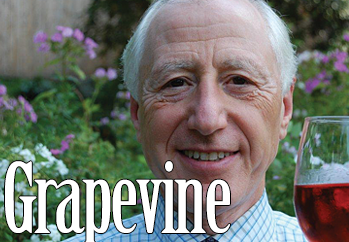What Goes on Behind the Scenes at a Wine Auction
Opinion Advocates for ideas and draws conclusions based on the author/producer’s interpretation of facts and data.
 In my last column, I presented the rarified world of wine auctions and my experience as a participant (more as an observer, really) of a high-end auction conducted by Christie’s Auction House.
In my last column, I presented the rarified world of wine auctions and my experience as a participant (more as an observer, really) of a high-end auction conducted by Christie’s Auction House.
These world-renowned auctions are conducted in major cities and are responsible for creating a market for fine and rare wines, typically the most sought-after bottles from elite and prestigious producers.
As purveyors, these auction houses – brokers, if you will, for private collectors – trade as a commodity house. They act as conduits for transferring fine wines from the cellars of collectors, who typically have amassed valuable collections over decades of meticulous purchasing upon release or at high-end auctions.
Over one or several decades, the auction houses may offer the wines of one private seller to another, and then onward to the next, ad nauseam. For each such facilitation, they stand to collect sizable commissions. The built-in profit formula arises from the fact that each vintage produces a fixed volume of wine, one which never expands and is continually depleted over time, inducing rising prices for shrinking inventories.
Let’s delve into the structure, operation and business model of these houses of high repute.
- The clientele. The participants at these high-end auctions tend to be well-heeled investors, seeking the self-fulfilling enjoyment of owning and imbibing rare wines or, in many instances, seeking bragging rights among fellow collectors. It is indisputable that the adrenalin rush alone justifies their effort.
- What wines may be offered? The standard auction catalog has historically been dominated by French wines. The highly desirable offerings from the Burgundy region tend to command top prices of lots and auctions, as do those from Bordeaux, while American wines have a small but voracious following. California cult wines such as Screaming Eagle compete head-to-head with a number of their French counterparts.
- The global picture. The breadth and depth of the business of conducting high-end auctions is impressive. At the turn of the 21st century, worldwide wine auction sales totaled $92 million. By 2022, willing sellers and buyers pushed sales to $524 million.
By far, the United States leads the pack of international auction house sales. In 2022, $265 million passed hands, with the average price of a lot (the composition, theme and size of a catalogued offering) at over $10,000. This statistic essentially sets the price of entry into an average auction proceeding. The top five auction houses accounted for $470 million, a whopping 90 percent of total global sales.
- A profile of a high-end auction. Record-setting prices have become commonplace in many auction-house offerings. Several years ago, the billionaire wine collector Bill Koch auctioned a portion of his collection through Sotheby’s auction house. He sold an astounding 20,000 bottles of wine, garnering an equally astounding $21.9 million in proceeds. The highest price paid? Over $34,000 for each of 10 bottles of 1945 Château Mouton Rothschild, a highly prized Bordeaux fine wine.
- The cost to bid. Only wealthy bidders can afford the cost of purchasing high-end wines. Fees, customarily paid by the buyer, can top 22 percent of the gavel price. Typically, a sliding scale is employed. The greater the purchase or the rarer the wine, the lower the fee. (That’s a function of auction houses vying with each other for prestigious sales from prestigious cellars.) The average fee ranges from 12.5 to 25 percent. When you do the math, the intense competition among auction houses to represent valuable cellars becomes obvious in lower fee structures.
Is this rarified air of wine auctions the exclusive enclave of the top one percent? Is there no opportunity for avid wine aficionados who lack the financial means of the titans of private wine cellars?
In another benefit afforded to the masses by digital technology, auction house events are now offering lower-priced wines to buyers who may not have the fortitude or egocentric audacity to bid at live auctions. I’ll explore this burgeoning market opportunity in a future column.
Nick Antonaccio is a 45-year Pleasantville resident. For over 25 years, he has conducted wine tastings and lectures. Nick is a member and Program Director of the Wine Media Guild of wine journalists. He also offers personalized wine tastings. Nick’s credo: continuous experimenting results in instinctive behavior. You can reach him at nantonaccio@theexaminernews.com.
